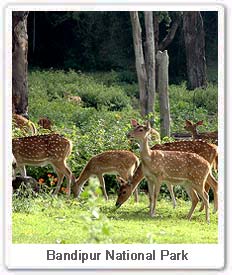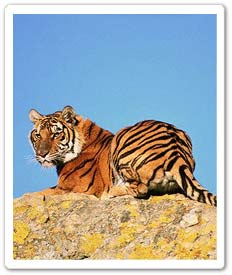ಪುಟ್ಟ ಭೂಮಿಯಲ್ಲಿ ಕೈತೋಟ ಮಾಡಬಹುದು. ಮನೆಯ ಸುತ್ತಲಿನ ಜಾಗದಲ್ಲಿ ತರಕಾರಿ, ಹಣ್ಣು, ಮರಮುಟ್ಟು, ಔಷಧಿ ಸಸ್ಯಗಳನ್ನು ಬೆಳೆಯಬಹುದು. ಸ್ವಲ್ಪ ಬುದ್ಧಿವಂತಿಕೆ, ಕೌಶಲ್ಯ ಪ್ರದರ್ಶಿಸಿದರೆ ಅದನ್ನೇ ಲಾಭದಾಯಕ ಕೃಷಿಯಾಗಿ ಪರಿವರ್ತಿಸಿಕೊಳ್ಳಲು ಕೂಡ ಸಾಧ್ಯವಿದೆ. ಅದನ್ನು ಕಾರ್ಯರೂಪಕ್ಕೆ ತಂದು ಪ್ರತ್ಯಕ್ಷವಾಗಿ ತೋರಿಸಿ ಕೊಟ್ಟಿದ್ದಾರೆ ದಾಸಯ್ಯನದೊಡ್ಡಿಯ ಜಯಪ್ಪ.
 ಮನೆಯ ಅಕ್ಕ-ಪಕ್ಕ ಅಲ್ಪಸ್ವಲ್ಪ ಜಮೀನು, ಹಿತ್ತಲು ಇರುವುದು ವಾಡಿಕೆ. ಆದರೆ ಎಲ್ಲರೂ ಆ ಹಿತ್ತಲಲ್ಲಿ ಕೃಷಿ ಮಾಡುವುದಿಲ್ಲ. ನೀರಿನ ಸಮಸ್ಯೆ, ಭದ್ರತೆಯ ಸಮಸ್ಯೆ... ಹೀಗೆ ಹಲವಾರು ಕಾರಣಗಳಿರಬಹುದು. ಆದರೆ ಇದನ್ನು ಎದುರಿಸಿ ಹಿತ್ತಲಲ್ಲಿ ಲಾಭದಾಯಕ ಕೃಷಿ ಮಾಡಿದ್ದಾರೆ ಅವರು.
ಮನೆಯ ಅಕ್ಕ-ಪಕ್ಕ ಅಲ್ಪಸ್ವಲ್ಪ ಜಮೀನು, ಹಿತ್ತಲು ಇರುವುದು ವಾಡಿಕೆ. ಆದರೆ ಎಲ್ಲರೂ ಆ ಹಿತ್ತಲಲ್ಲಿ ಕೃಷಿ ಮಾಡುವುದಿಲ್ಲ. ನೀರಿನ ಸಮಸ್ಯೆ, ಭದ್ರತೆಯ ಸಮಸ್ಯೆ... ಹೀಗೆ ಹಲವಾರು ಕಾರಣಗಳಿರಬಹುದು. ಆದರೆ ಇದನ್ನು ಎದುರಿಸಿ ಹಿತ್ತಲಲ್ಲಿ ಲಾಭದಾಯಕ ಕೃಷಿ ಮಾಡಿದ್ದಾರೆ ಅವರು. ಕನಕಪುರ ತಾಲ್ಲೂಕು ದೊಡ್ಡೂರಿನಿಂದ 22 ಕಿಮಿ ದೂರದ ಕರ್ನಾಟಕ ತಮಿಳುನಾಡು ಗಡಿಯ ತಳಿ ಎಂಬ ಗ್ರಾಮದಿಂದ ಸುಮಾರು ನಾಲ್ಕು ಕಿಲೊಮೀಟರ್ ಸಾಗಿದರೆ ಜಯಪ್ಪನವರ ಸಾಧನೆಯನ್ನು ನೋಡಬಹುದು. ಇದು ಭೌಗೋಳಿಕವಾಗಿ ತಮಿಳುನಾಡಿನಲ್ಲಿದ್ದರೂ ಇಲ್ಲಿನ ಜನರ ಮುಖ್ಯಭಾಷೆ ಕನ್ನಡ. ನಂತರ ತೆಲುಗು, ತಮಿಳು.
ಇಲ್ಲಿ ಕೇವಲ ಹದಿನೆಂಟು ಗುಂಟೆ (ಅರ್ಧ ಎಕರೆಗಿಂತ ಸ್ವಲ್ಪ ಕಡಿಮೆ) ಜಾಗದಲ್ಲಿ ಅದ್ಭುತ ತೋಟ ಮಾಡಿದ್ದಾರೆ. ಮಲೆನಾಡಿನ ಕರಿಮೆಣಸು, ಏಲಕ್ಕಿ, ಕಾಫಿ, ಬಯಲು ಸೀಮೆಯ ಸಜ್ಜೆ, ಹಲಸು ಸೇರಿದಂತೆ ಅರವಕ್ಕೂ ಹೆಚ್ಚು ವಿಧದ ಬೆಳೆಗಳನ್ನು ಹಿತ್ತಲಲ್ಲಿ ಕಾಣಬಹುದು.
ಒಂದು ತುದಿಯಲ್ಲಿ ನಿಂತು ನೋಡಿದರೆ ಇನ್ನೊಂದು ತುದಿ ಕಾಣುವುದಿಲ್ಲ. ಅಷ್ಟೊಂದು ದಟ್ಟ ಹಸಿರಿನಿಂದ ಅವರ ಹಿತ್ತಲು ಕಂಗೊಳಿಸುತ್ತದೆ. ಕಳೆದೊಂದು ದಶಕದಿಂದ ಸಾವಯವ ಪದ್ಧತಿಯನ್ನೇ ಗಟ್ಟಿಯಾಗಿ ಅನುಸರಿಸಿಕೊಂಡು ಬಂದಿದ್ದಾರೆ.
ಪ್ರತಿ ವರ್ಷ ನನಗೆ ಇದರಿಂದ 60 ರಿಂದ 70 ಸಾವಿರ ರೂಪಾಯಿ ಬರುತ್ತದೆ. ಈ ವರ್ಷ ಖರ್ಚು ಕಳೆದು 45 ಸಾವಿರ ರೂಪಾಯಿಯಷ್ಟು ಲಾಭ ಬಂದಿದೆ` ಎನ್ನುವಾಗ ಅವರ ಮುಖದಲ್ಲಿ ಹೆಮ್ಮೆ, ಖುಷಿ. ಈ ವರ್ಷ ನೀರಿನ ಕೊರತೆಯಿಂದ ಸ್ವಲ್ಪ ಸಮಸ್ಯೆ ಆಯಿತು ಎನ್ನುತ್ತಾರೆ.
ಆದಾಯದ ಮೂಲಗಳು...
ಅವರ ಹಿತ್ತಲಲ್ಲಿ ಕರಿ ಮೆಣಸು ಬಳ್ಳಿ ಸಿಲ್ವರ್ ಗಿಡದ ಮೇಲೆ ಸೊಂಪಾಗಿ ಬೆಳೆದಿದೆ. ಹತ್ತು ಬಳ್ಳಿಗಳು ಕಾಯಿ ಬಿಟ್ಟಿದ್ದವು. ಐದು ವರ್ಷದ ಹಿಂದೆ ಬಳ್ಳಿಯನ್ನು ನಾಟಿ ಮಾಡಿದ್ದರು. ಮನೆಯಲ್ಲೆೀ ಸಿಗುವ ಕೊಟ್ಟಿಗೆ ಗೊಬ್ಬರ ಹಾಕುತ್ತ ಬಂದಿದ್ದಾರೆ. ಈ ವರ್ಷ ಒಂದು ಬಳ್ಳಿಯಿಂದ ಸರಾಸರಿ ಒಂದು ಕಿಲೊದಂತೆ ಹತ್ತು ಕಿಲೊ ಇಳುವರಿ ಬಂದಿದೆ. ಅದರಿಂದ ಎರಡು ಸಾವಿರ ರೂ ಗಳಿಕೆಯಾಗಿದೆ.
ಅದೇ ಜಾಗದಲ್ಲಿ ಕಾಫಿ ಸಸಿಗಳ ನಡುವೆ 15 ಏಲಕ್ಕಿ ಹಾಕಿದ್ದು ಭರ್ಜರಿ ಬೆಳೆದಿದೆ. ಈ ವರ್ಷ 10 ಏಲಕ್ಕಿ ಗಿಡದಿಂದ ಐದು ಕಿಲೊ ಏಲಕ್ಕಿ ಕೊಯ್ಲು ಮಾಡಿದ್ದಾರೆ. ಆದರೆ ಇನ್ನೂ ಮಾರಿಲ್ಲ.
ಅದೇ ತಂಡು ಭೂಮಿಯಲ್ಲಿ ಎರಡು ಹಲಸಿನ ಮರಗಳಿವೆ. ಅವರೇ ಹೇಳಿದ ಪ್ರಕಾರ ಒಂದು ಗಿಡದ ಹಣ್ಣು ಬಲು ರುಚಿ. ಮುಂಗಡವಾಗಿ ಹಣ ಕೊಟ್ಟು ಈ ಗಿಡದ ಹಣ್ಣುಗಳನ್ನು ಖರೀದಿ ಮಾಡುತ್ತಾರಂತೆ. ಆ ತಳಿಯನ್ನು ಸಹಜ ಸಮೃದ್ಧ ಸಂಸ್ಥೆಯ ಜಿ. ಕೃಷ್ಣಪ್ರಸಾದ ಕೊಟ್ಟಿದ್ದರಂತೆ. ಹಲಸಿನ ತೊಳೆ ತುಸು ಹಳದಿ ಬಣ್ಣದಲ್ಲಿದ್ದು, ಆಕಾರದಲ್ಲಿ ದೊಡ್ಡದಾಗಿದೆ.
ತಿನ್ನಲು ತುಂಬಾ ಹದವಿರುವ ತಳಿ. ಸುಮಾರು 60 ರಿಂದ 70 ಹಣ್ಣುಗಳು ಹಲಸಿನ ಮರದಿಂದ ಬರುತ್ತವೆ. ಈ ಸಲ ಮೂರು ಸಾವಿರ ರೂ ಆದಾಯ ಸಿಕ್ಕಿದೆ.
ಅದೇ ಹಿತ್ತಲಲ್ಲಿ ಎರಡು ಎರೆಗೊಬ್ಬರ ತೊಟ್ಟಿಯನ್ನು ಕಟ್ಟಿದ್ದಾರೆ.
ಅದರಿಂದ ಎರೆಹುಳು ಹಾಗು ಎರೆಗೊಬ್ಬರವನ್ನು ಮಾರುತ್ತಾರೆ. ದಿನಕ್ಕೆ ಒಂದು ತಾಸು ಸಮಯವನ್ನು ಎರೆಗೊಬ್ಬರ ಉತ್ಪಾದನೆ ಕೆಲಸಕ್ಕಾಗಿ ಮೀಸಲಿಟ್ಟಿದ್ದಾರೆ.
ಅವರ ಉಳಿದ ಜಮೀನಿನಲ್ಲಿ ಸಿಗುವ ಕೃಷಿ ತ್ಯಾಜ್ಯ ಹಾಗು ಸಗಣಿಯನ್ನು ಬಳಸಿಕೊಂಡು ಎರಗೊಬ್ಬರ ಉತ್ಪಾದಿಸುತ್ತಾರೆ. ಒಂದು ಕಿಲೊ ಎರೆಹುಳುವಿಗೆ 300 ರೂ ಹಾಗು ಒಂದು ಕಿಲೊ ಎರೆಗೊಬ್ಬರಕ್ಕೆ 400 ರೂಪಾಯಿ ದರ ಇದೆ. ಇದೊಂದರಿಂದಲೇ 20 ಸಾವಿರ ರೂಪಾಯಿ ಸಂಪಾದಿಸಿದ್ದಾರೆ.
ಮನೆ ಮುಂದೆ ಐದು ವರ್ಷಗಳ ಹಿಂದೆ ಬಾಳೆ ಹಾಕಲಾಗಿತ್ತು. ಈಗಲೂ ಅವರು ಸುಮಾರು ಮೂರು ತಿಂಗಳಿಗೊಮ್ಮೆ ಒಂದು ಬಾಳೆಗೊನೆ ಕೊಯ್ಲು ಮಾಡುತ್ತಾರೆ. ಅದಕ್ಕೆ ಗೊಬರ್ ಗ್ಯಾಸ್ ಸ್ಲರಿ ಹಾಕುತ್ತಾರೆ. ಹೀಗಾಗಿ ತುಂಬಾ ಚೆನ್ನಾಗಿ ಬೆಳೆದಿದೆ. ಬಾಳೆಯಿಂದಲೇ ಒಂದು ಸಾವಿರ ರೂ ಸಿಕ್ಕಿದೆ.
ಇವುಗಳ ಜೊತೆಗೆ ಮನೆಗೆ ಬೇಕಾಗುವಷ್ಟು ತೆಂಗು, ಕಾಫಿ, ಅಡಿಕೆ, ವಿವಿಧ ತರಕಾರಿಗಳು, ಸೊಪ್ಪು, ಗಡ್ಡೆ, ಹೂವುಗಳು, ವೀಳ್ಯದಲೆ, ಜೇನು, ಹಣ್ಣುಗಳು, ಅರಿಸಿಣ, ಶುಂಠಿ, ಔಷಧಿ ಸಸ್ಯ ಹಾಗು ಹಸುಗಳಿಗೆ ಬೇಕಾದ ಹುಲ್ಲು ಬೆಳೆದಿದ್ದಾರೆ.
ಉಳುಮೆ ಕಾಣದ ಹಿತ್ತಲು...
ಕಳೆದ ಹತ್ತು ವರ್ಷಗಳಿಂದ ಹಿತ್ತಲನ್ನು ಉಳುಮೆ ಮಾಡಿಲ್ಲ. ಗಿಡ ನಾಟಿ ಮಾಡುವಾಗ ಮಾತ್ರ ಭೂಮಿಯನ್ನು ಉಳುಮೆ ಮಾಡಿದ್ದರು. ಆದರೂ ಭೂಮಿ ಮಾತ್ರ ತುಂಬಾ ಹದವಿದೆ. ಬರಿಗೈಯಲ್ಲೇ ಒಂದು ಅಡಿಯಷ್ಟು ಅಗಿಯಬಹುದು. ಪ್ರತಿ ವರ್ಷ ಕೃಷಿ ತ್ಯಾಜ್ಯವನ್ನು ಭೂಮಿಗೆ ಸೇರಿಸುತ್ತಾ ಬಂದಿದ್ದಾರೆ. ಹಾಗಾಗಿಯೇ ಭೂಮಿ ಮೃದುವಾಗಿದೆ.
`ಮೊದಮೊದಲು ಭೂಮಿಯ ಫಲವತ್ತತೆ ಸರಿಯಾಗಿರಲಿಲ್ಲ. ಹಾಗಾಗಿ ಆರಂಭದಲ್ಲಿ ಸಗಣಿ ಗೊಬ್ಬರ ಬಳಸುತ್ತಾ ಬಂದೆ. 3-4 ವರ್ಷ ಒಣಗಿದ ಹಾಗು ಹಸಿ ಕೃಷಿ ತ್ಯಾಜ್ಯವನ್ನು ಸೇರಿಸಿದೆ. ಈಗ ಭೂಮಿಯ ಫಲವತ್ತತೆಯ ಜೊತೆಗೆ ನೀರು ಹಿಡಿದುಕೊಳ್ಳುವ ಸಾಮರ್ಥ್ಯ ಹೆಚ್ಚಾಗಿದೆ. ಉಳುಮೆ ಹಾಗು ಗೊಬ್ಬರದ ಖರ್ಚೂ ಇಲ್ಲ` ಎನ್ನುತ್ತಾರೆ.
ಬಹುಬೆಳೆ...
ತದ್ರೂಪಿ ಕಾಡನ್ನು ಕೃಷಿ ಜಮೀನಿನಲ್ಲಿ ಬೆಳೆಸುವುದನ್ನು ನೋಡಿದ್ದೇವೆ. ಆದರೆ ಹಿತ್ತಲಲ್ಲಿ ಕಾಡು ಬೆಳೆಸಿರುವ ಜಯಪ್ಪನವರ ಸಾಧನೆ ಅಮೋಘ. ಕಾಫಿ, ಹಲಸು, ತೆಂಗು, ಅಡಿಕೆ, ಬಾಳೆ, ನಿಂಬೆ, ನಿಂಬೆ ಹುಲ್ಲು, ಏಲಕ್ಕಿ, ಅರಿಸಿಣ, ನೇರಳೆ, ಲೋಳೆಸರ, ನಾಗದಾಳಿ, ಮೆಣಸು, ವೆನಿಲಾ, ಕಾಡುಗೆಣಸು, ಸಿಹಿಗೆಣಸು, ಮರಗೆಣಸು, ನುಗ್ಗೆ, ಇಂಡಿಗೊ, ಕರಿಬೇವು, ಕಾಡು ಕೊತ್ತಂಬರಿ, ಸೀಮೆ ಬದನೆ, ವೆಲ್ವೆಟ್ ಬೀನ್ಸ್, ಗುಲಾಬಿ, ಸೇವಂತಿಗೆ, ಲಾವಂಚ, ನಿಂಬೆ, ಸೀಸಂ, ತೇಗ, ಹುಣಸೆ, ಸಿಲ್ವರ್, ಗ್ಲಿರಿಸಿಡಿಯಾ... ಅಬ್ಬಬ್ಬಾ ಎಂದು ಹುಬ್ಬೇರಿಸಬೇಡಿ. ಇಂಥ ಇನ್ನೂ ಹತ್ತಾರು ಸಸ್ಯ, ಮರಗಳು ಇಲ್ಲಿವೆ. ಬೇರೆ ಕಡೆ ಹೋದಾಗಲೆಲ್ಲಾ ಸಸಿ- ಬೀಜ ತಂದು ನಾಟಿ ಮಾಡುತ್ತಾರೆ.
ಕಾಳುಮೆಣಸು ಮುಖ್ಯ ಬೆಳೆಯಾದರೂ ಜೊತೆಗೆ ಅನೇಕ ಗಿಡ-ಮರಗಳು, ಬೆಳೆಗಳು, ಅಲಂಕಾರಿಕ ಮತ್ತು ಔಷಧಿ ಸಸ್ಯಗಳು, ತರಕಾರಿಗಳು, ಬಳ್ಳಿಗಳನ್ನು ಬೆಳೆಯುತ್ತಿದ್ದೇನೆ. ಅನುಭವದ ಪ್ರಕಾರ ಒಂದಕ್ಕಿಂತ ಹೆಚ್ಚಿನ ಬೆಳೆ ಬೆಳೆದರೆ ಅಧಿಕ ಲಾಭ ಕಾಣಬಹುದು.
ಒಂದು ಬೆಳೆ ಕೈಕೊಟ್ಟರೆ ಮತ್ತೊಂದು ಬೆಳೆ ಕೈ ಹಿಡಿಯುತ್ತೆ. ಪರೋಕ್ಷವಾಗಿ ರೋಗ ಮತ್ತು ಪೀಡೆಯನ್ನು ನಿಯಂತ್ರಿಸಬಹುದು. ಮನೆಗೆ ಬೇಕಾದ ಎಲ್ಲಾ ತರಕಾರಿಗಳನ್ನು ಜಮೀನಿನಲ್ಲೆ ಬೆಳೆದುಕೊಳ್ಳಬಹುದು. ಮಿಶ್ರಬೆಳೆ ಪದ್ಧತಿ ಆರ್ಥಿಕ ಸಬಲತೆಗೆ ಪೂರಕವಾಗುತ್ತದೆ. ಹಿತ್ತಲಲ್ಲಿ ಹೆಚ್ಚು ಹೆಚ್ಚು ಬೆಳೆ ಬೆಳೆದರೆ ಊಟಕ್ಕೆ ಎನೂ ಕೊರತೆಯಿಲ್ಲ` ಎನ್ನುತ್ತಾರೆ.
ನಿಸರ್ಗದತ್ತ ಹೆಜ್ಜೆ...
`ಭೂತಾಯಿಯನ್ನು ಆಶ್ರಯಿಸಿದ್ದರಿಂದ ಬದುಕು ಸರಳವೆನಿಸುತ್ತಿದೆ. ನಾನು ಮತ್ತು ನನ್ನ ಕುಟಂಬ ನಿಸರ್ಗಕ್ಕೆ ಹತ್ತಿರವಾಗಿದ್ದೇವೆ. ಇದರಿಂದ ಕೆಟ್ಟ ಗುಣಗಳು ಮೂಲೆ ಗುಂಪಾಗುತ್ತವೆ. ಕೃಷಿಯು ಜೀವನದ ಸಾರವನ್ನು ಹೇಳಿಕೊಟ್ಟಿದೆ. ಪರಿಸರಕ್ಕೆ ಹತ್ತಿರವಾಗಿದ್ದಕ್ಕೆ ವಿಷಮುಕ್ತ ಆಹಾರ ಸಿಗುತ್ತದೆ. ಆಸ್ಪತ್ರೆ ಖರ್ಚು ಸಹ ಕಡಿಮೆಯಾಗಿದೆ` ಎನ್ನುವುದು ಅವರ ಸ್ವಾನುಭವದ ಮಾತು.











